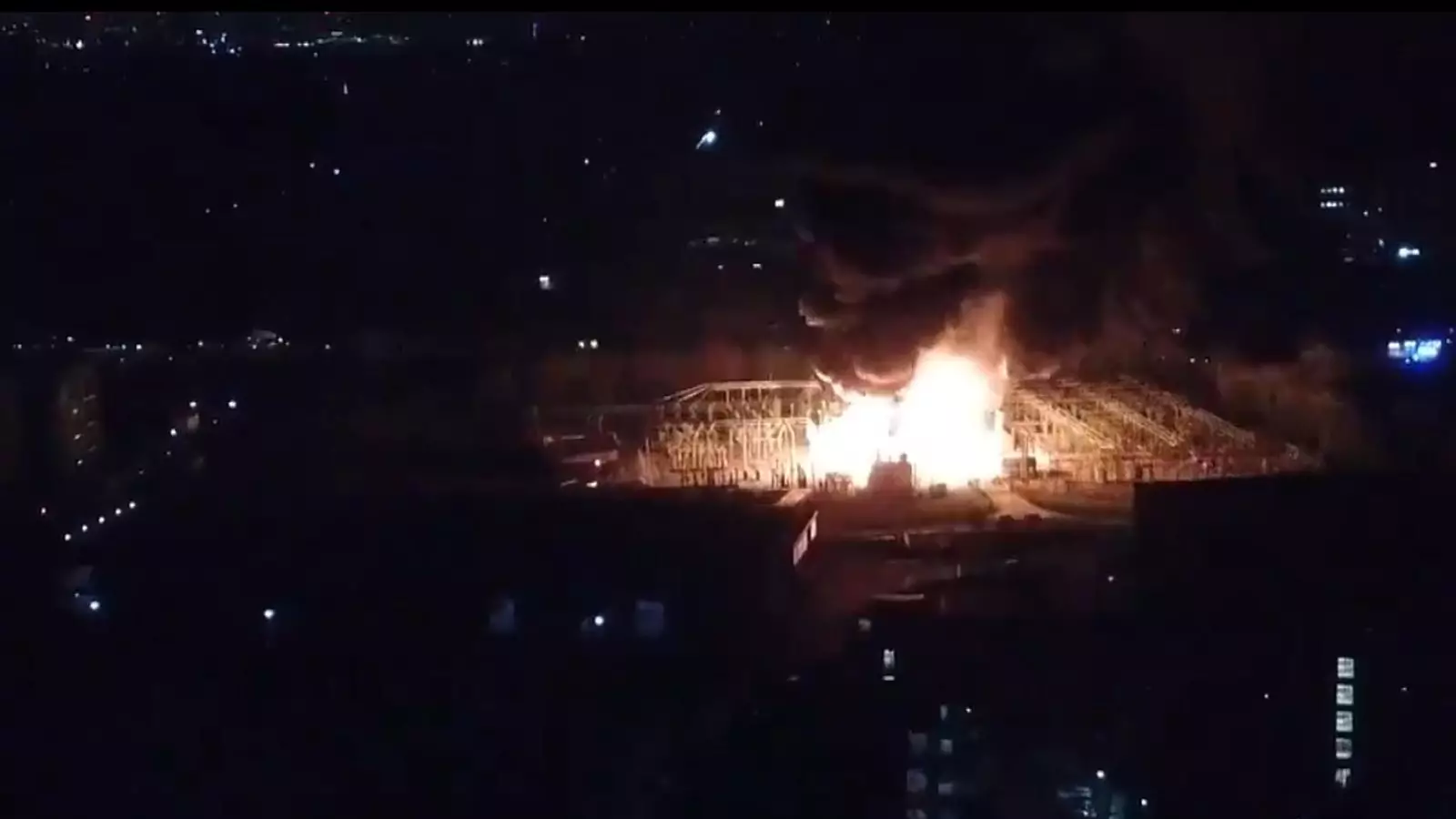Heathrow Airport, a colossal hub serving millions of passengers annually, is facing unprecedented turmoil due to a substantial fire at a nearby electricity substation. This incident has rendered the airport powerless, throwing it into a state of bewildering disarray. With no definitive timeline for the restoration of power, the situation spirals out of control, devolving into a scenario that will affect countless travelers worldwide—over 1,351 flights have already been implicated in this crisis, leading to extensive delays and cancellations. The logistical nightmare unfolding highlights how vulnerable even the most sophisticated of transport infrastructures can be to external variables.
It’s vital to grasp the profound implications of this catastrophe. Heathrow isn’t merely an airport; it’s the beating heart of London’s interconnectedness with the rest of the world. An airport that averaged nearly 84 million passengers last year thrives on rhythm and routine—flights taking off and landing every 45 seconds. In an age where so much hinges on precision timing and executable plans, the disruption caused by a singular event stands as a glaring reminder of our reliance on technology and electrical infrastructure.
The Immediate Repercussions
The immediate fallout from this disaster is staggering. Passengers are advised to stay away from the airport under all circumstances, effectively marshaling a colossal number of lives into frenetic uncertainty. For many, the dream vacation or critical business engagement is transformed into a farcical spectacle of confusion and disrupted plans. This turmoil is not simply an inconvenience; it’s an economic and emotional catastrophe. Airlines like British Airways, the linchpin of Heathrow’s operations, indicate that this cessation of activity will rattle supply chains and create a ripple effect far beyond London’s borders.
Consider the human component—each delayed traveler represents a story disrupted. Whether it’s a family yearning to reunite or a business leader striving to close a critical deal, the realization that they cannot continue with their plans due to a fire in a distinctly separate area invokes a profound sense of helplessness.
The Underlying Issues of Infrastructure Vulnerability
While the immediate fallout of the Heathrow fire is glaring, one must also deliberate the broader issues regarding infrastructure resilience. A fire in an electricity substation leading to mass airport closures raises significant questions about the dependability of our energy systems and the preparedness of essential services. The ambiguity of restoration time offers no comfort either—what does it say about our public infrastructure if such a basic yet pivotal system collapses so readily?
Critics of privatization and deregulation within the energy sector may argue that this incident underscores the perils stemming from an over-reliance on profit-driven policies that prioritize cost over robust safety measures. If further analysis of the causes of the fire reveals deficiencies in maintenance protocols, it could ignite a conversation about the need for systemic overhauls. A proactive approach is paramount to mitigate risks and establish a fortified framework that enables us to withstand both expected and unexpected challenges.
The Social Impact on Local Communities
Beyond the airport, the fire affects approximately 16,000 homes in the surrounding neighborhoods. Affected residents find themselves grappling not only with power outages but also suffocating anxiety as emergency responders battle the blaze. Smoke billowing from the scene adds another layer of distress, prompting local authorities to advise residents to keep doors and windows closed—a simple yet poignant reminder of how intertwined our lives are with those infrastructures we often take for granted.
This crisis further illuminates the disparities often existing in local emergency response strategies. While focused on mitigation and resolution, the voices of those affected should not be subdued in the cacophony of crisis management. An inclusive conversation about support systems and resource allocation for affected neighborhoods is crucial in maintaining a cohesive community spirit amid chaos.
The Path Forward: System Strengthening
With recovery on the horizon, it’s time for stakeholders to embrace this moment as a rare opportunity for introspective examination and lasting improvement. Airlines, airports, and utility companies must prioritize collaboration to ensure a state of readiness for future crises. Focused investments in infrastructure resilience, employee training, and community engagement will be essential to prevent similar debacles.
The consequences of today’s events will echo for weeks to come, highlighting the fragility of our interconnected systems. By taking decisive actions rooted in awareness and responsibility, we can build a more resilient future, transforming a moment of crisis into an opportunity for growth and advancement.


Leave a Reply